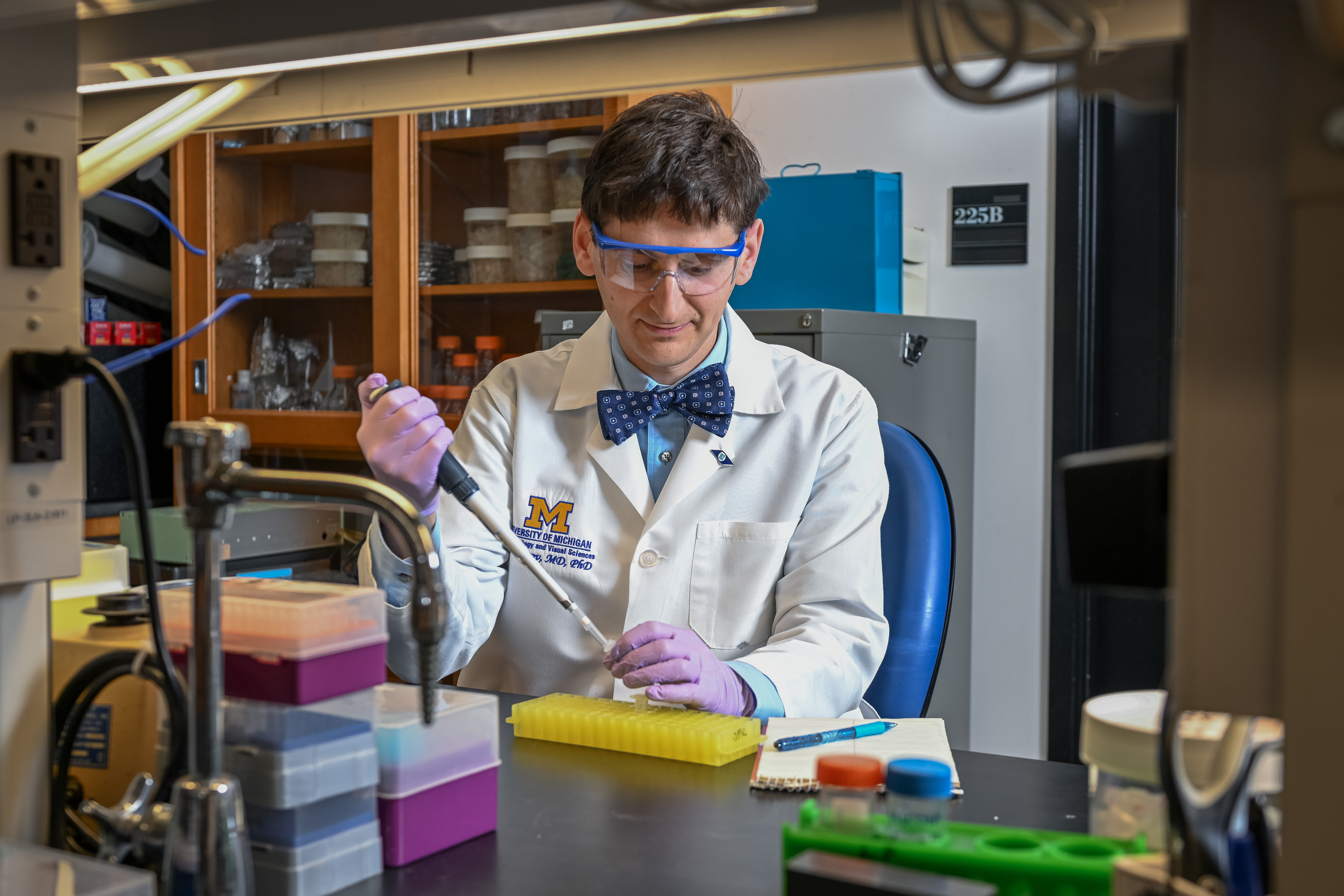
2 minute read
Can Regulating MYRF Protect the RPE?
One promising front in the battle against age-related macular degeneration (AMD) is the development of genetic strategies to increase the resilience of the retinal pigment epithelium (RPE) and better defend against its deterioration.
In previous research, Kellogg physician-scientist Lev Prasov, M.D., Ph.D., described the role the gene myelin regulatory factor (MYRF) plays in the development of the RPE. Might that same transcription factor continue to play a protective role in the mature RPE?
Dr. Prasov’s latest MYRF research attempts to answer that question by better understanding the genes and pathways that support RPE function. In laboratory models of the mature RPE, he will conduct studies that both reduce and increase the function of MYRF and several of its target genes, measuring the impact of those changes on different aspects of RPE cell structure and physiology.
“In many tissues in the body, MYRF has been shown to play a supportive role in cellular structure and homeostasis,” he says. “We hypothesize that may be true in the cells of the adult RPE, where MYRF remains highly expressed. If so, this protective property of MYRF could represent a novel therapeutic target for AMD and other diseases of deteriorating RPE physiology.”
To establish the models used in these studies, Dr. Prasov is receiving support from colleagues with expertise in RPE culture and biology, including Jason Miller, M.D., Ph.D., at the Kellogg Eye Center, and Kapil Bharti, Ph.D., at the National Institutes of Health’s National Eye Institute (NIH/NEI).
The work is supported by a grant from the Bright Focus Foundation, which has named Dr. Prasov the inaugural recipient of the Dr. Joe G. Hollyfield New Investigator Award for Macular Degeneration Research










